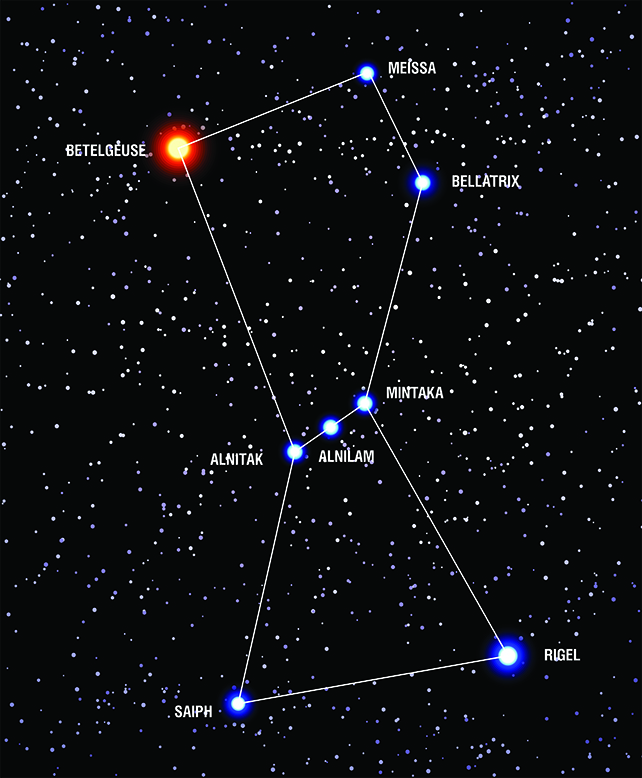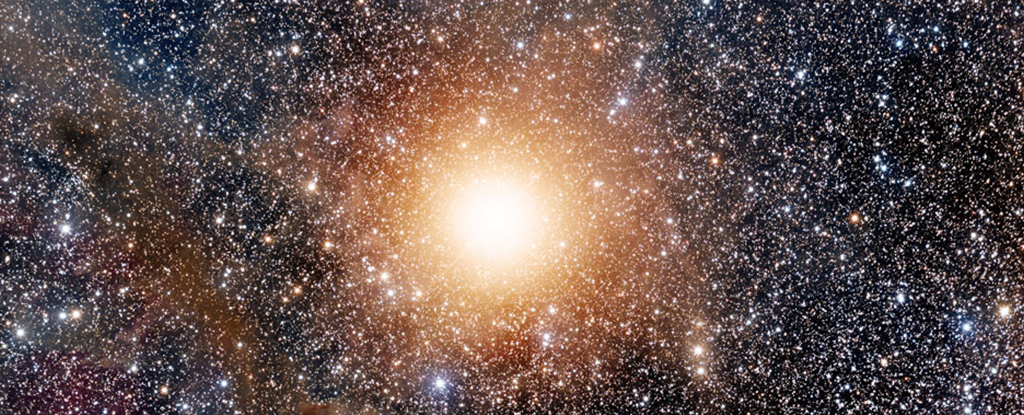Products You May Like
A little more than 650 light-years from Earth, an old, red star lies dying. A fresh prognosis on Betelgeuse‘s condition based on its pulsations gives the celebrated supergiant just a few decades before it collapses in a final flash of glory.
Researchers from Tohoku University in Japan and the University of Geneva in Switzerland have reassessed oscillations in the brightness of the nearby star, finding it’s likely they represent the very end stage of the star’s life after all.
Few stars deserve their own daytime soap opera like the red supergiant Betelgeuse. Dimming suddenly in 2019, astronomers gathered like trust-fund babies in anticipation of a rich uncle’s demise, only to learn the star had coughed up something dark and dusty enough to temporarily obscure its glow.

Earlier this year Betelgeuse’s usual glow peaked, blazing over one-and-a-half times as bright as usual. Once again there was speculation over the object’s fate, and whether the changes were a death rattle or simply palpitations that come with old age.
Once a hot, heavyweight beast known as an O-type star, Betelgeuse follows the creed of burn fast, die young, having only come into existence a mere 10 million years ago.
Already a bloated red ball of gas running low on fuel, its years are numbered. Just how numbered depends on a bunch of factors.
One is its actual size, which has been the subject of debate over much of the 20th century. With recent measures putting it at the more compact end of estimates, it’s likely the star has many tens of thousands of years to go before it’ll finally grow cold enough to implode.
There are other reasons to think Betelgeuse is trim enough to still have some way to go.
Like many stars, its outer layers pulse in an equilibrium of contractions and expansions driven by internal dynamics of competing pressure and gravity.
The resulting fluctuations in brightness hum in frequencies that take months, or even years to repeat – in Betelgeuse’s case, its two most notable periods are approximately 2,200 and 420 days long.
The shorter period has typically been regarded as the dominant ‘beat’ of this enormous heart, representing an oscillation in the star’s entire girth in what’s known as its radial fundamental mode. Critically, calculations based on this relatively rapid expansion and contraction is what we might expect of a slightly smaller and therefore younger O-type star.
But what if there were more to the 2,200-day-long cycle than appears? The researchers behind this latest investigation aren’t so quick to dismiss the much slower pulse as a so-called long secondary period, arguing the thermodynamics behind oscillations in luminous supergiants like Betelgeuse are a little more complicated than in most other stars.
If the star were squeezing atomic nuclei into slightly larger elements, such as carbon, it just might manage a much longer radial pulsing period. Where the shorter duration radial modes would put Betelgeuse’s radius at around 800 to 900 times that of our Sun, the team showed how the longer pulse would be consistent with a radius of around 1,300 times.
That means the outer layers of Betelgeuse are drifting much further away as its mass concentrates in its core, churning through fuel at a rate fast enough for its engines to seize not in millennia, but in decades.
Though yet to pass through peer review, the preprint release of their calculations and reasoning is enough to remain somewhat optimistic that we just might yet observe a supernova with modern instrumentation in our lifetime.
Odds are good that, if the model is correct, we could watch Betelgeuse briefly outshine all other stars soon after the middle of the century before it fades from its constellation forever.

Of course there is sure to be continued debate over the details of Betelgeuse’s true size and proximity to death until it does finally go pop.
Only then will we look back on its turbulent existence with fresh eyes, more knowledgeable of stellar dynamics, and like the drama-hungry beasts we are, go looking for the next star perched on the brink of destruction and look on with ghoulish glee.
This research is available on arXiv.
